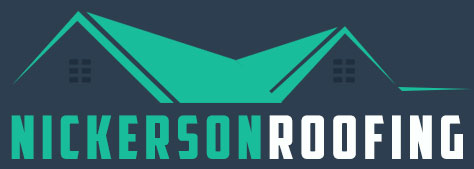Snow-covered landscapes can be enchanting, but the impact of heavy snowfall on roofs can lead to threatening damage, including ice dams, leaks, and structural stress. However, there is a solution that can help prevent these issues and that is with heat tracing. Nickerson Roofing would like to cover the many benefits of heat tracing design and heat trace cable installation in reducing the impact of snow damage on roofs.
Can Snow & Ice Damage Your Roof?
To better understand the benefits of heat tracing, it help to understand the problems snow and ice can pose for roofs:
• Ice Dams: Ice dams form when snow on the roof melts, runs down to the eaves, and refreezes. This creates a barrier that prevents further snowmelt from draining off the roof, leading to water seepage under shingles and into your home.
• Roof Leaks: As ice dams persist, they can force water underneath roofing materials, causing leaks. These leaks can damage insulation, ceilings, walls, and even the structural integrity of your home or building.
• Excess Snow Load: Accumulating snow on your roof can put immense stress on its structure, potentially leading to collapses or costly damage.
The Role of Heat Tracing in Snow Damage Prevention
Heat tracing is a technology that involves installing heating cables or mats on various surfaces, including roofs, gutters, and downspouts. This system generates heat to melt snow and ice, preventing the formation of ice dams and reducing the overall snow load on your roof. Here’s how they work:
• Heat Tracing Design: The first step in reducing snow damage on roofs is a properly thought-out heat tracing design. Professionals assess your specific needs, taking into account factors like climate, roof shape, and local weather patterns. They determine the best placement and type of heating cables or mats for your roof.
• Heat Trace Cable Installation: Once the design is finalized, the next step is heat trace cable installation. Skilled technicians install the cables or mats in critical areas, such as along the eaves, valleys, and gutters, where ice dams commonly form. These heating elements are discreetly integrated into your roof and gutters, ensuring they blend seamlessly with your existing roofing system.
Benefits of Heat Tracing for Snow Load Reduction
• Prevents Ice Dams: Heat tracing systems work to keep the temperature of your roof above freezing, preventing snow and ice from accumulating and forming ice dams.
• Preserves Roof Integrity: By reducing the snow load on your roof, heat tracing helps prolong the life of your roofing materials and prevents costly structural damage.
• Eliminates Roof Leaks: With ice dams and snow accumulation under control, the risk of roof leaks and interior water damage is significantly reduced.
• Energy-Efficient: Modern heat tracing systems are energy-efficient, as they only activate when needed. This means you can enjoy the benefits of snow and ice prevention without skyrocketing energy bills.
• Year-Round Use: Heat tracing systems can also be used for de-icing gutters and downspouts, preventing ice buildup that can lead to gutter damage and water overflow during thaw cycles.
Rooftop Snow Management, Roof Repair, Replacement & More in Truckee, Mystic, Tahoe City, Kings Beach & The North Lake Tahoe Basin of California
Heat tracing design and heat trace cable installation offer an effective solution for reducing the impact of snow damage on roofs. By preventing ice dams, roof leaks, and excessive snow loads, these systems help homeowners and building owners protect their investments and enjoy peace of mind during winter months. If you need help managing snow and ice on your rooftops, contact Nickerson Roofing today.




